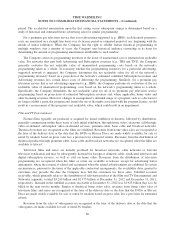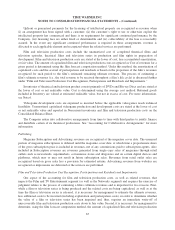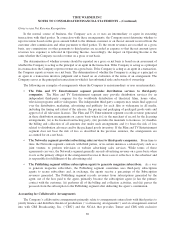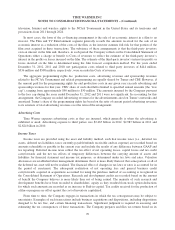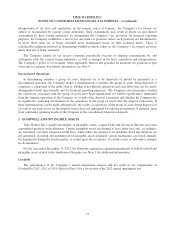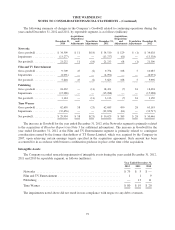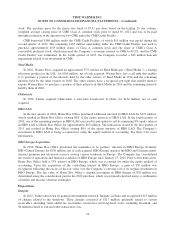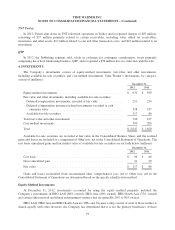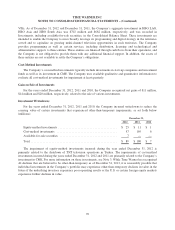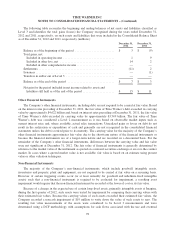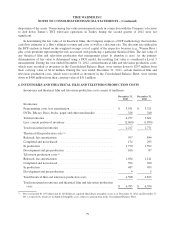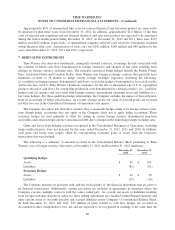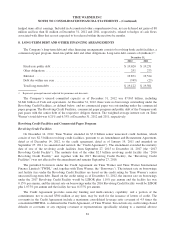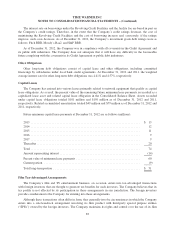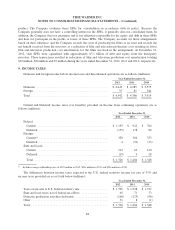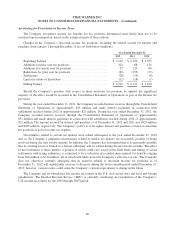Time Magazine 2012 Annual Report Download - page 92
Download and view the complete annual report
Please find page 92 of the 2012 Time Magazine annual report below. You can navigate through the pages in the report by either clicking on the pages listed below, or by using the keyword search tool below to find specific information within the annual report.
TIME WARNER INC.
NOTES TO CONSOLIDATED FINANCIAL STATEMENTS – (Continued)
VIEs. As of December 31, 2012 and December 31, 2011, the Company’s aggregate investment in HBO LAG,
HBO Asia and HBO South Asia was $702 million and $682 million, respectively, and was recorded in
Investments, including available-for-sale securities, in the Consolidated Balance Sheet. These investments are
intended to enable the Company to more broadly leverage its programming and digital strategy in the territories
served and to capitalize on growing multi-channel television opportunities in such territories. The Company
provides programming as well as certain services, including distribution, licensing and technological and
administrative support, to these entities. These entities are financed through cash flows from their operations, and
the Company is not obligated to provide them with any additional financial support. In addition, the assets of
these entities are not available to settle the Company’s obligations.
Cost-Method Investments
The Company’s cost-method investments typically include investments in start-up companies and investment
funds as well as its investment in CME. The Company uses available qualitative and quantitative information to
evaluate all cost-method investments for impairment at least quarterly.
Gain on Sale of Investments
For the years ended December 31, 2012, 2011 and 2010, the Company recognized net gains of $11 million,
$14 million and $20 million, respectively, related to the sale of various investments.
Investment Writedowns
For the years ended December 31, 2012, 2011 and 2010, the Company incurred writedowns to reduce the
carrying value of certain investments that experienced other-than-temporary impairments, as set forth below
(millions):
December 31,
2012 2011 2010
Equity-method investments ....................................... $ 25 $ 11 $ 1
Cost-method investments ........................................ 57 169 6
Available-for-sale securities ...................................... 7 — —
Total ......................................................... $ 89 $ 180 $ 7
The impairment of equity-method investments incurred during the year ended December 31, 2012 is
primarily related to the shutdown of TNT television operations in Turkey. The impairments of cost-method
investments incurred during the years ended December 31, 2012 and 2011 are primarily related to the Company’s
investment in CME. For more information on these investments, see Note 3. While Time Warner has recognized
all declines that are believed to be other-than-temporary as of December 31, 2012, it is reasonably possible that
individual investments in the Company’s portfolio may experience other-than-temporary declines in value in the
future if the underlying investees experience poor operating results or the U.S. or certain foreign equity markets
experience further declines in value.
76


